景德镇御窑博物馆,江西,中国
朱锫建筑事务所
客户:景德镇市文化广播电影电视新闻出版局,景德镇陶瓷文化旅游发展有限公司
主持建筑师:朱锫
前置批评:周榕
艺术顾问:王明贤,李翔宁
设计团队:朱锫建筑事务所
项目成员:Shuhei Nakamura,何帆,韩默,由昌臣,张顺,刘亦安,刘伶,吴志刚,杜扬,杨圣晨,陈奕达,贺成龙,丁新月,聂文浩
合作:清华大学建筑设计研究院有限公司
结构工程师:郑宇,张慧
Client:Jingdezhen Municipal Bureau of Culture Radio Television Press Publication and Tourism,Jingdezhen Ceramic Culture Tourism Group
Principal Architect:ZHU Pei
Critic:ZHOU Rong
Art Consultants:WANG Mingxian,LI Xiangning
Design Team:Studio Zhu Pei
Project Members:Shuhei Nakamura,HE Fan,HAN Mo,YOU Changchen,ZHANG Shun,LIU Yian,LIU Ling,WU Zhigang,DU Yang,YANG Shengchen,CHEN Yida,HE Chenglong,DING Xinyue,NIE Wenhao
Collaborators:Architectural Design and Research Institute of Tsinghua University Co.,Ltd.
Structural Engineers:ZHENG Yu,ZHANG Hui
场地
景德镇御窑博物馆是一个以展示御窑瓷器文物为主的博物馆,位于景德镇历史街区的中心,毗邻明代御窑遗址。它的周围有各种历史建筑,包括传统民居、私家民窑、工厂和1990 年代末兴建的住宅。这些建筑形成了丰富多样的城市结构,并塑造了一个具有丰富历史背景的地段环境。
概念
博物馆的概念着重于重新发现景德镇的根源,以及定义博物馆经验的革命性思维的创新理念。
(1)原型:作为城市工业生产的重要结构,以及作为公共生活和文化记忆的重要场所,砖窑是景德镇城市的起源。博物馆的原型是由传统柴窑转化而来,它由8 个基于传统窑炉形式的砖拱形结构组成。每个砖拱体都有不同的大小、长度和曲率,让人联想到窑炉的特殊性和窑砖的材料质量。地面层和地下一层将所有的拱体和庭院连接在一起,这一做法具有很强的当地文化基础。
(2)多孔通风的装置:景德镇夏季炎热,人们要在阴凉下生存,还要保证通风良好,这就是屋檐遮蔽的窄巷和垂直的四合院形式的由来,让人们感到舒适。8 个砖砌拱体长轴沿南北向布置,两端开放。开放的空拱与封闭的拱间或布置,既能阻挡西侧的阳光,又能将每个拱体变成风洞,让凉风流入,捕捉夏季最频繁的南北风。5 个尺度不一的下沉式院落创造了与当地垂直院落一样的烟囱效应,由此创造了一个三维立体的通风装置。
Context
The Museum,a porcelain museum focusing on Imperial Kiln artefacts,is located in the centre of the historical area in Jingdezhen,adjacent to the Imperial Kiln Ruins of Ming Dynasty.It is surrounded by various historical buildings,including old houses,traditional kilns,factories,and residential buildings of the late 1990s.These buildings have shaped a rich and diverse urban fabric and formed a unique site with enriching historical contexts.
Concept
The concepts of the museum focus on rediscovering the roots of Jingdezhen and the innovation ideas that defines the revolutionary thinking of the museum experience.
(1) Prototype
As an essential structure for the city's industrial production and as a central place for both public life and cultural memory,the brick kiln has entered the entire city history in the form of architecture.The prototype of the Museum is translated from traditional brick kiln;it comprises eight brick vaults based on the traditional forms of kiln.Each of the brick vaults is of a different size,length and curvature,calling to mind the special and material quality of the kilns.The ground level and basement level connect all vaults and courtyards together with a strong local cultural basis.
(2) A porous installation of wind
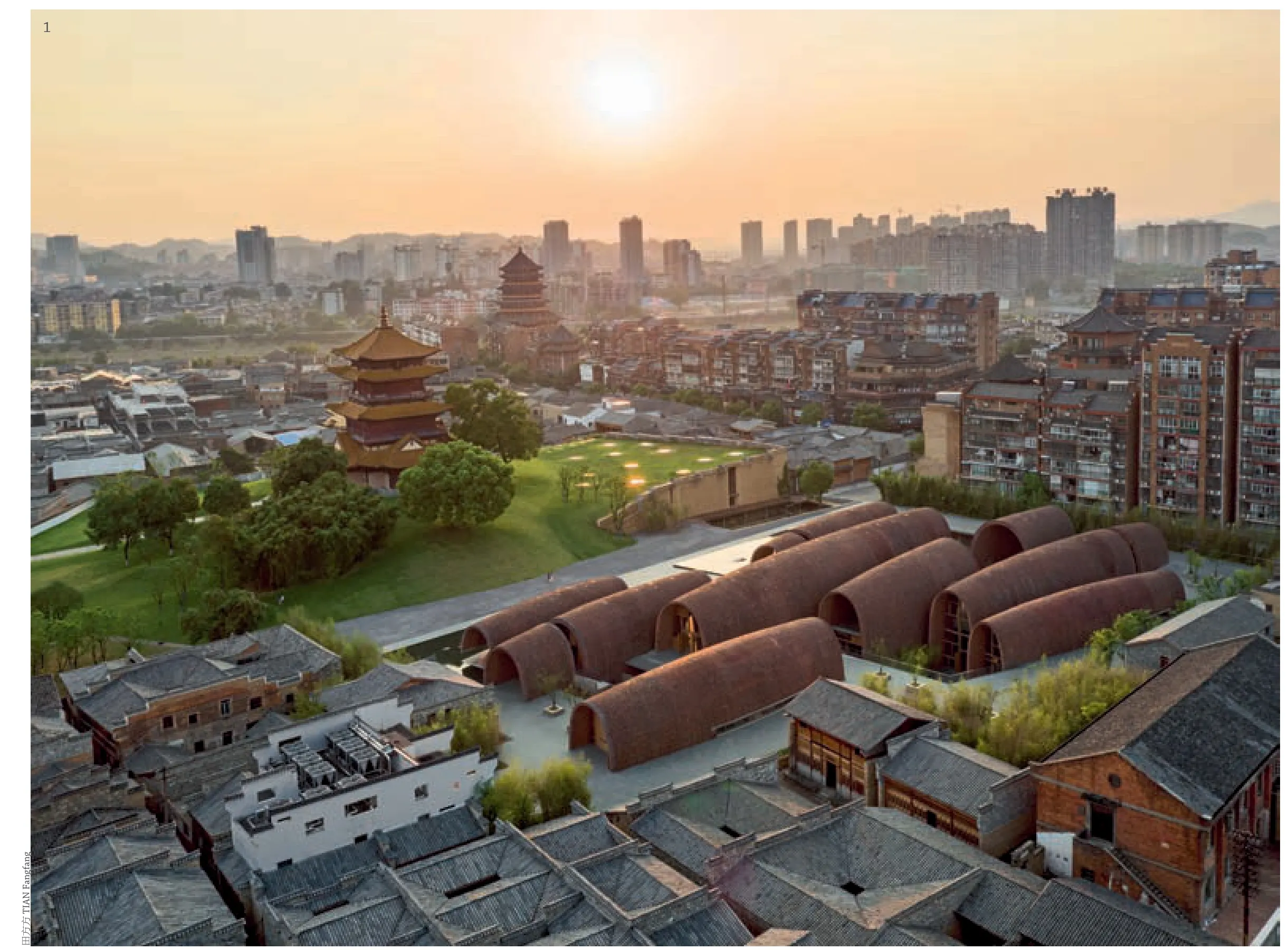
1 鸟瞰Aerial view
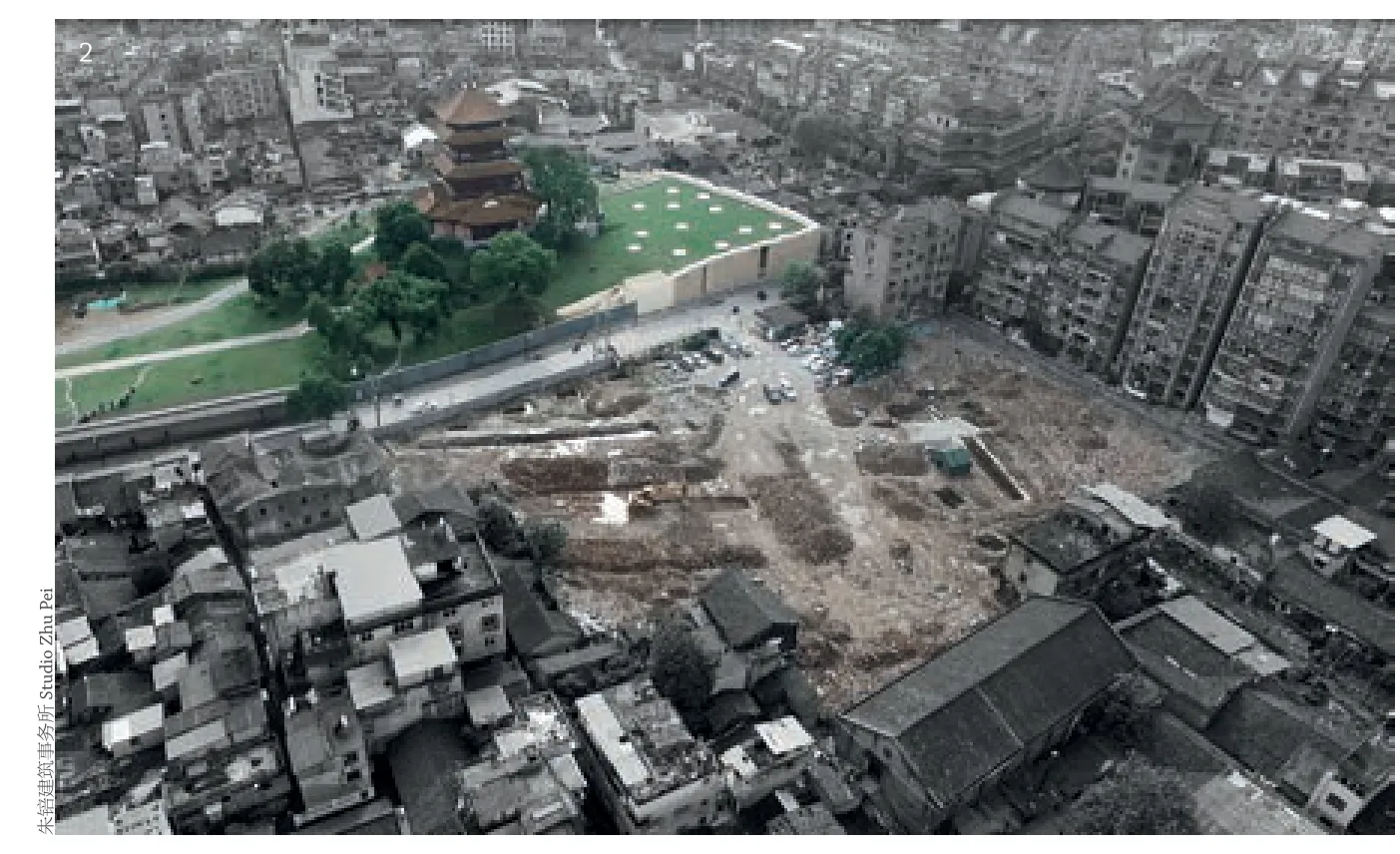
2 基地建设前鸟瞰Aerial view before construction
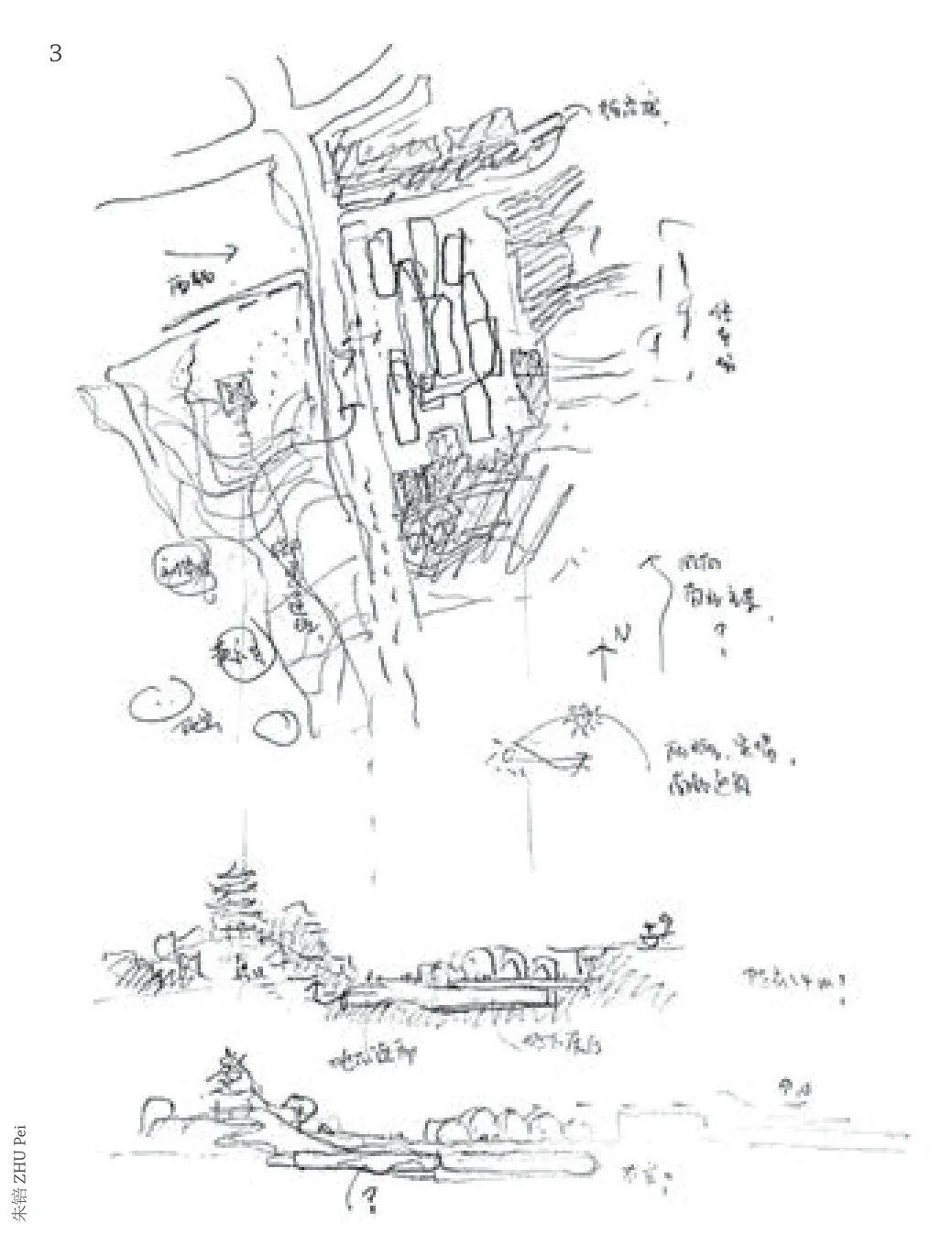
3 草图Sketch
结构、机电、绿建顾问:清华大学建筑设计研究院有限公司
幕墙顾问:深圳市大地幕墙科技有限公司
照明顾问:北京宁之境照明设计有限责任公司
声学顾问:浙江大学建筑技术研究所
总承建:中国建筑一局(集团)有限公司,中建一局华江建设有限公司结构体系:钢筋混凝土拱壳及砖拱
材料:回收的老窑砖与新砖
场地面积:9752m2
基底面积:2920m2
总建筑面积:10,370m2
建筑高度:8m
设计时间:2016.01-2017.03
施工时间:2016.10-2020.03
绘图:朱锫建筑事务所
摄影:是然建筑摄影,田方方,朱锫建筑事务所
Structural,MEP and Green Building:Architectural Design and Research Institute of Tsinghua University Co.,Ltd Facade:Shenzhen Dadi Facade Technology Co.,Ltd.
Lighting:Ning Field Lighting Design Co.,Ltd.
Acoustic:Shenzhen Dadi Facade Technology Co.,Ltd.
General Contractor:China Construction First Group Corporation Limited,Huajiang Construction Co.,Ltd.of China Construction First Group
Structural System:Reinforced concrete arch shell and brick arch
Material:Recycled and new kiln brick masonry
Site Area:9752 m2
Built Area:2920 m2
Total Floor Area:10,370 m2
Height:8 m
Design Period:2016.01-2017.03
Construction Period:2016.10-2020.03
Completion Time:2020.03
Drawings:Studio Zhu Pei
Photos:schranimage,TIAN Fangfang,Studio Zhu Pei
(3)一个自然光的装置:塑造一个充满自然光的内部空间是重要概念。首先,开放式拱体和封闭式拱体的间或布置,使人们在博物馆中行走时能够感受到光线明暗变化的节奏。其次,5 个下沉式院落将光线引入地下,完全颠覆了人们对地下空间的感受。此外,沿拱体长轴两端的开放透明以及沿地面所切割出水平向横缝,还有似传统砖窑的观察孔的圆柱形天窗,它们穿透拱体,星罗棋布般散落在拱顶上,所有这些特殊的开窗方式,借助建筑自身的多孔性,从不同维度、以不同的方式漫射进博物馆内部。在此,自然光成为一种媒介,将人、展品和建筑交织在一起。
结构和材料
博物馆的基本结构是拱形结构体系,由两层砖墙砌成,中间浇筑混凝土。使用回收的窑砖建造房屋是景德镇的一个重要特点,因为每隔两三年就必须拆除窑炉以保持一定的蓄热性能。回收的旧窑砖与新砖混合,反映了当地的建筑文化。这种自然、遗址、风、光、声、新旧材料的交织,必然激发人们的兴趣与好奇,通过与人们的思维互动,创造新的问题,给出新的答案,不可避免地唤起人们的记忆,享受独特的博物馆体验。过去的历史与传统不能被抹去,而是通过以新的思考和感悟来重新书写,可谓是一种当代考古学。□
评审评语
景德镇御窑博物馆位于瓷都景德镇历史街区的中心,毗邻明代御窑遗址。博物馆的形式语言来自于历史上的窑炉的形状,建筑的某些部分由回收的窑砖建成。该项目的特别之处在于对陶瓷工业的诗意回应,以及它在周围高密度城市中的巧妙定位,这使得场地能同时唤起本地人与游客的认同感。(母卓尔 译)

4 剖面Section
Jingdezhen is hot in summer,people have to live utilizing shade and natural ventilation,and this is the reason why narrow alley with roof overhang and small vertical courtyard house both create shade and wind tunnels to let people feel comfortable.The long axis of eight brick vaults is arranged along the north-south direction with two ends open.The arrangement of the open vault and enclosed ones,can not only block the sunlight on the west side,but also transform each vault into a wind tunnel,allowing the cool breeze to flow in and to capture the most frequent south-north wind in summer.The five sunken courtyards of different scales create a chimney effect similar to that of the local vertical courtyards.A three-dimensional wind installation is thus formed by both the horizontal wind tunnels and the vertical chimney effect.
(3) An installation of natural light
Constructing an interior space that is full of natural light is the primary consideration.Firstly,the alternative arrangement of open vaults and enclosed vaults creates a rhythmic sensation of light and shade while walking through the museum.Secondly,the five sunken courtyards channel direct the light towards the floor,completely subverting people’s feelings of the underground space.Moreover,natural light in the interior is achieved through the openings at both ends of the vaults,the horizontal slits alongside the floor,the slits between two adjacent vaults and the cylindrical skylights.With all these special "windows" and the porosity of the building,light diffuses into the interior space through different dimensions and ways.Natural light is a medium that intertwines people,exhibits,and architecture.
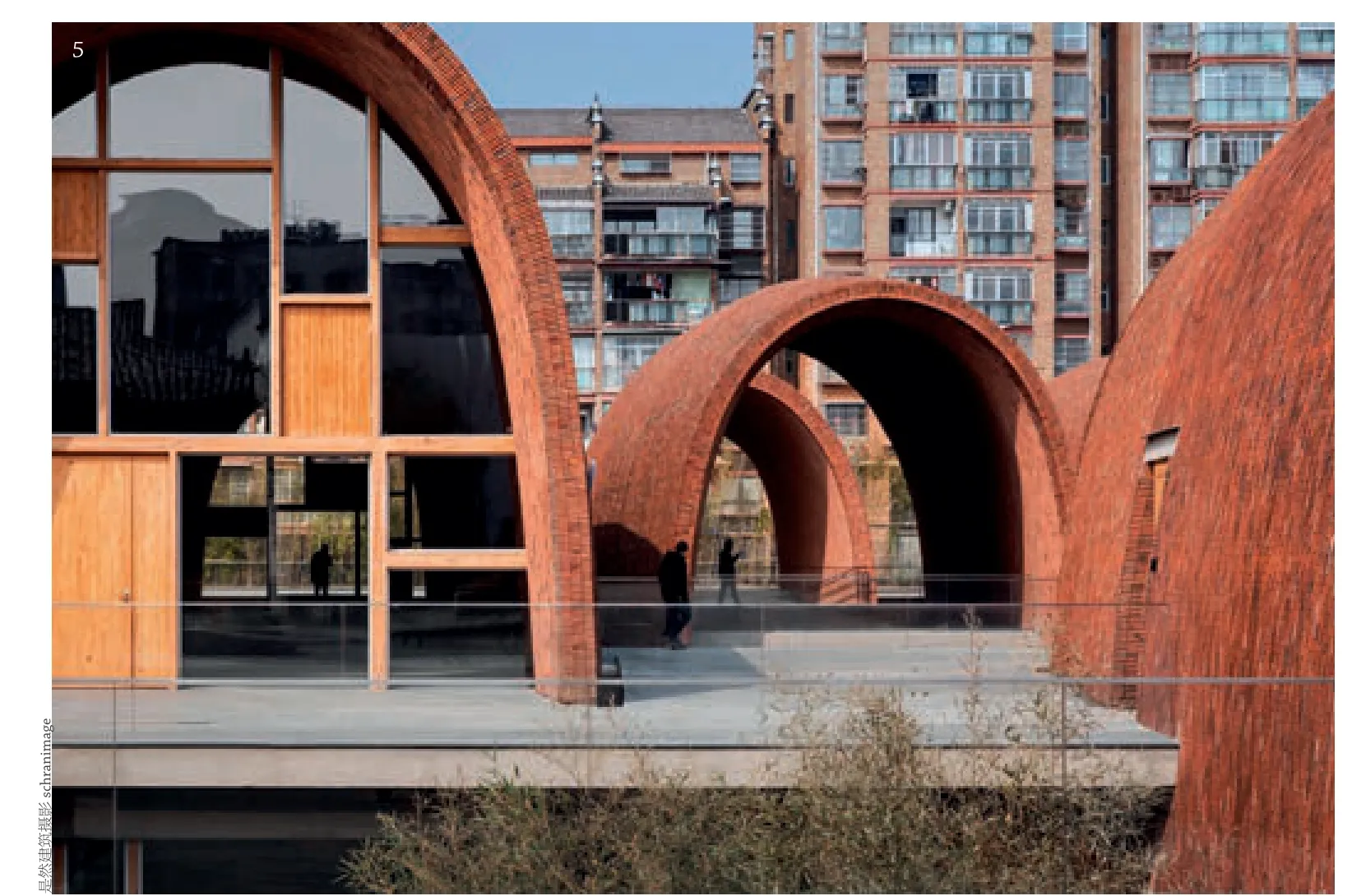
5 开放的拱券View to open vaults
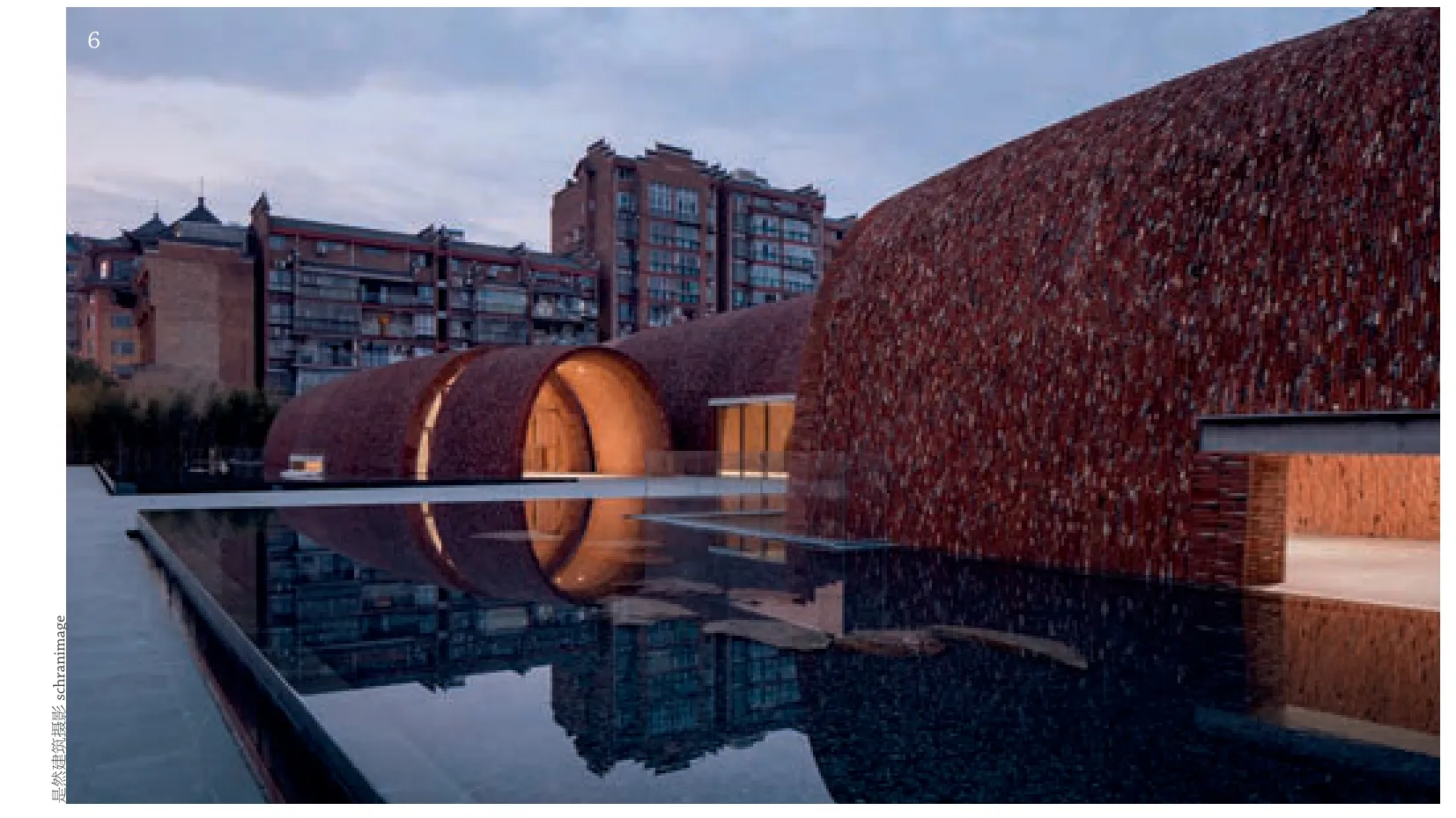
6 西南视角South-west view
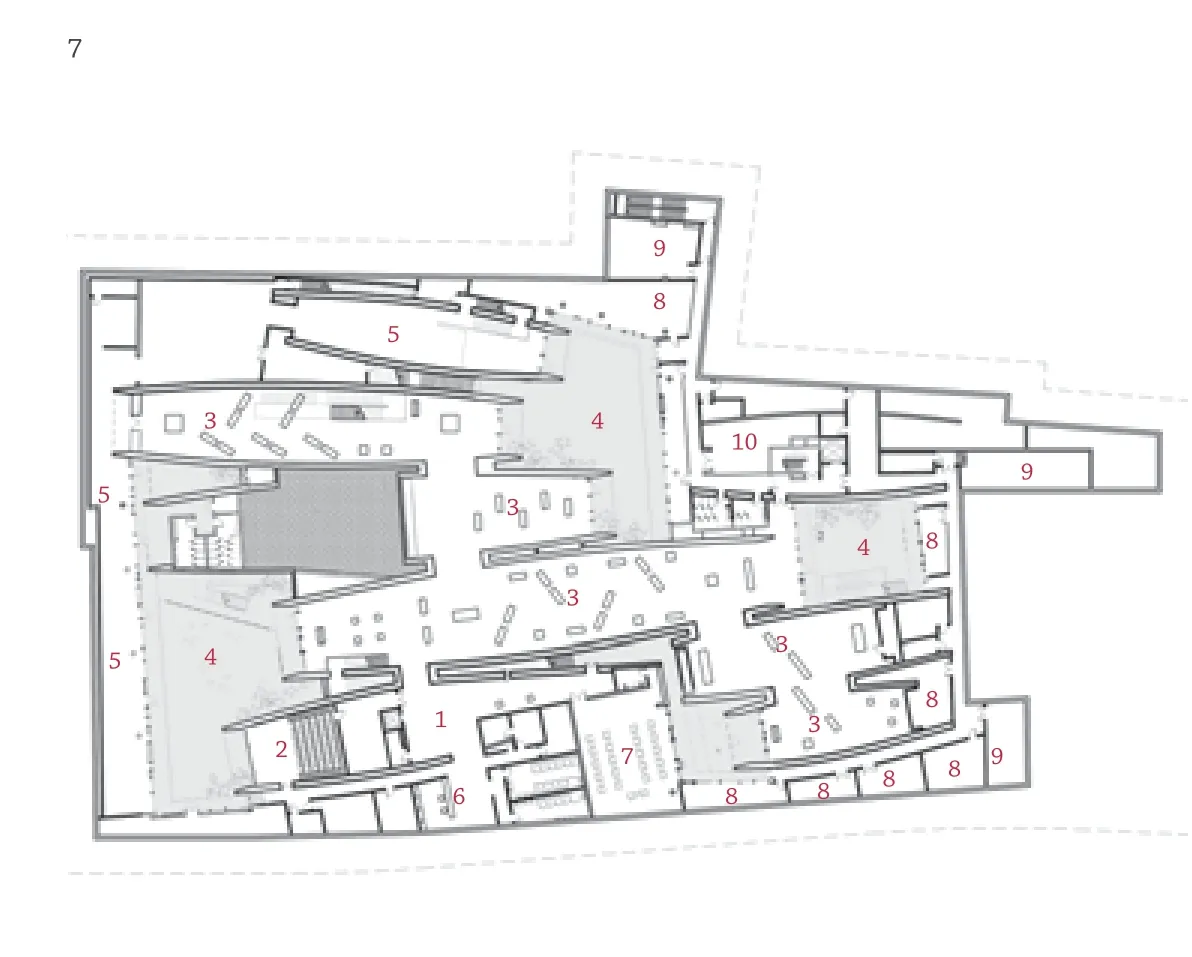
7 地下一层平面Basement 1 plan

8 首层平面Ground floor plan

9 草图Sketch
Structure and Materials
The basic structure of the museum is arched structure system consisting of two layers of masonry brick walls with concrete poured between them.Using recycled kiln bricks to build house is a significant character in Jingdezhen because kilns have to be demolished every two or three years to maintain a certain thermal performance.The recycled old kiln bricks are mixed with new bricks to reflect the local culture of construction.This interweaving of nature,ruins,wind,light,sound,and new and old materials is bound to spark interest,curiosity,creating new questions and give new answers by interacting with people's minds,inevitably evoking people's memories and enjoying unique experience.The past cannot be erased but is rewritten by reconstructing it with a new awareness and maturity that can be described as a kind of contemporary archaeology.□
Jury Statement
The Imperial Kiln Museum is located in the historical centre of Jingdezhen,the city of porcelain,adjacent to the Imperial Kiln Ruins of the Ming Dynasty.The museum derives its formal language from the shape of the historic kilns and was partly built of recycled bricks.Its particular quality is to be found in this poetic reference to the ceramics industry as well as in its subtle placemaking within the dense surrounding city,constituting a site of identification for locals and tourists alike.
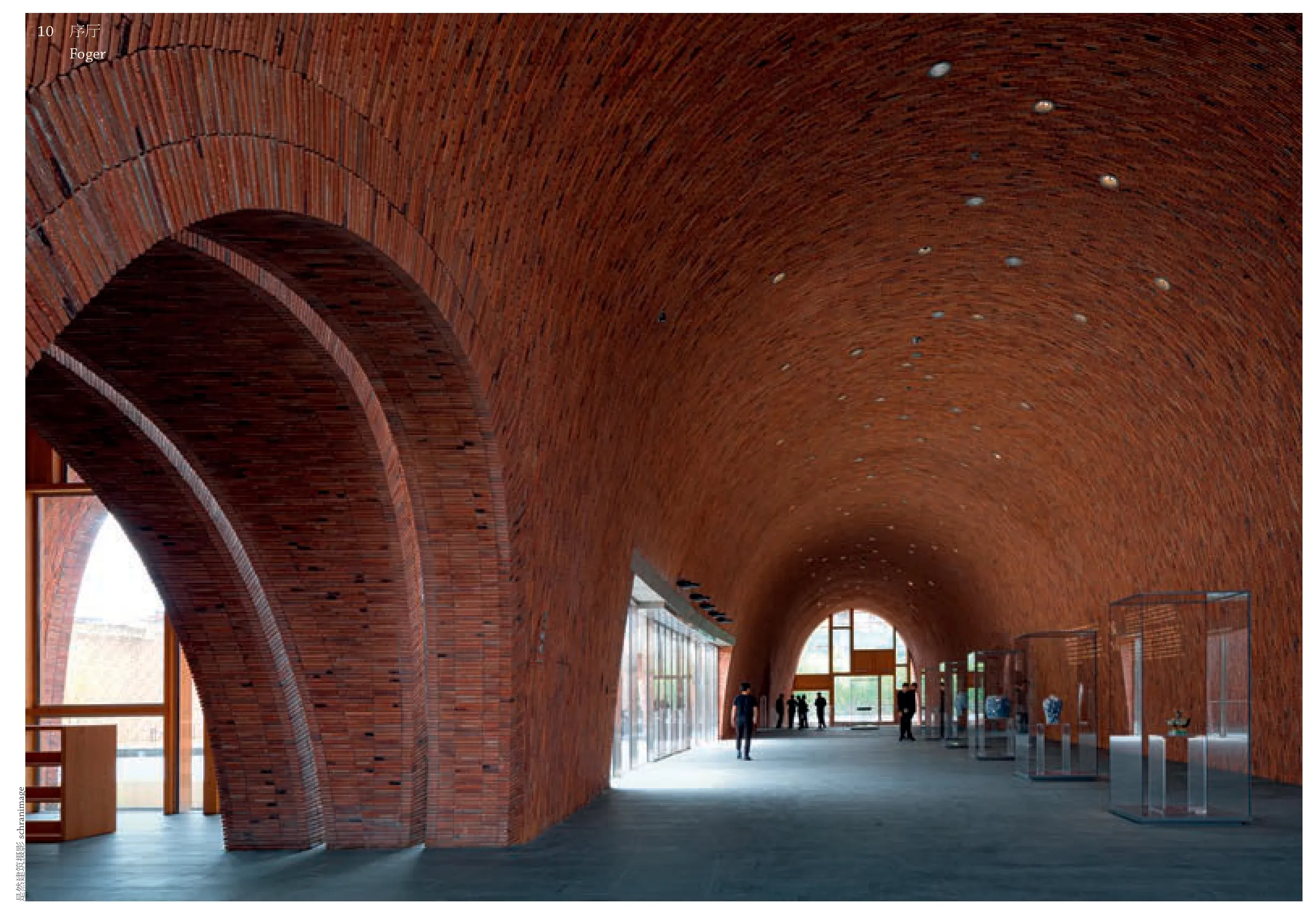
10 序厅Foger

11 报告厅Auditorium

12 下沉庭院Sunken courtyard
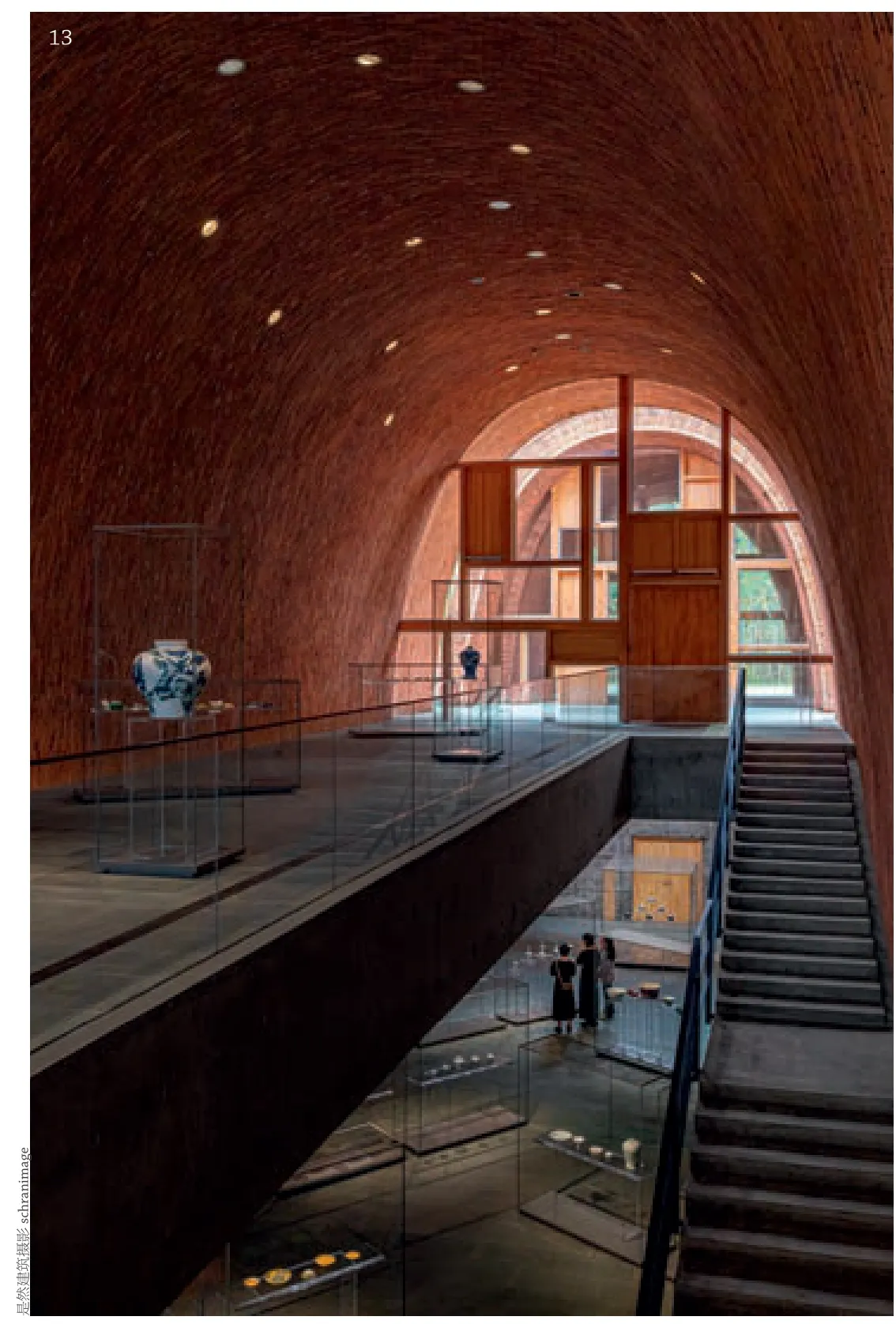
13 首层固定展览Permanent exhibition on the ground level

14 开放的拱券之间View in between open vaults
——省景德镇老年大学校歌

